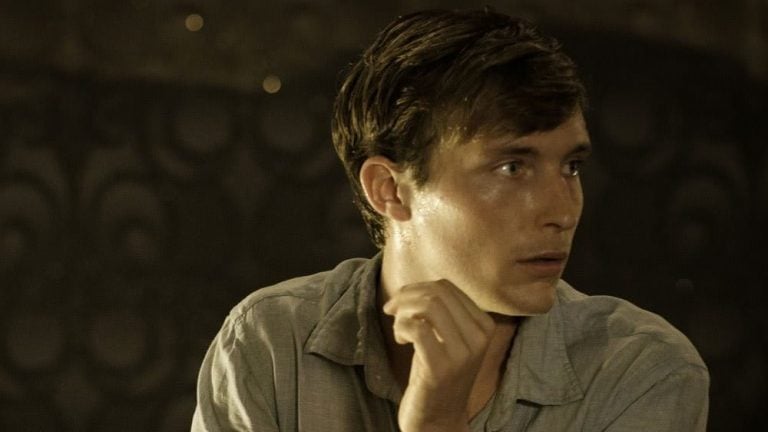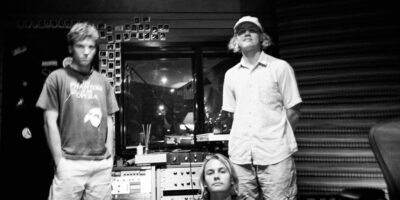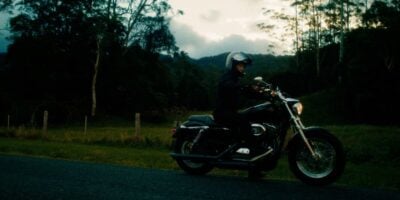The main distinction between the two adaptations of Kenneth Cook’s acerbic 1961 novel Wake In Fright – the 1971 Ted Kotcheff film and the recently aired 2017 TV miniseries – is the effectiveness with which they critique toxic masculinity. After all, Kotcheff’s version, a long lost classic that was only recently restored, showed Australia a nightmarish vision of itself, holding up a vicious mirror image that many weren’t entirely ready to confront, while the new, updated version has all the edge of soggy cereal.
Kotcheff’s film follows the story of poor, doomed John Grant, a teacher who finds himself stranded in the town of Bundayabba after he loses his flight money in a game of two-up. He ends up suckered into the alcoholic, ultra-masculine way of life of the town, pining for coastal Sydney and his girlfriend, Robyn, who waits for him there. It’s a simple story, and one told with a relentless pace; it’s as jagged and mean as a broken whiskey bottle, and managed to upset both critics and audiences alike when it was released.
Indeed, there’s a widely circulated – if not entirely believable – anecdote often relayed about the film: apparently, during an early screening, a man stood up, pointed at the screen and yelled, ‘That’s not us!’ At which point Jack Thompson, a young actor who starred in the film yelled back, ‘Sit down, mate. It is us.’
While not entirely reliable as a story, it does neatly captures why the film has burned a place into Australia’s cultural memory. The men in the original Wake In Fright are terrifying, bloated figures – they alternate between flashes of aggressive friendliness and violence, coercing Grant into a kangaroo hunt with smiles rather than physical force, and chiding him when they discover he’d rather talk to a woman than drink beer. It’s the depiction of this kind of aggressive hospitality – one forever lubricated by copious amounts of alcohol – that makes the film so memorable.
Of course, the film also boasts a distinctive visual element: Kotcheff instructed the costume and set designers to avoid using any cool colours, giving the film a sun-sick look. That, coupled with heavy therimen usage on the soundtrack, made the film more like a horror movie than anything else – a strange, lopsided look at a culture squirming around in the dirt.
And while its critique of everything Australia holds dear – beer, blokiness, and anti-intellectualism, for starters – did little to endear it with mainstream audiences, over its lifetime it has been championed by figures as diverse as David Stratton and Martin Scorsese, with the latter selecting it as a Cannes Classic in 2009. Nick Cave even called it one of our culture’s finest self-portraits; a brutal self-analysis daubed in beer froth.
I don’t believe in the sanctity of ‘original’ versions, and I think that one of the storyteller’s most vital tools is recontextualising old stories.
Ten’s recent miniseries, while slickly produced enough, lacks the same punch. Rather than giving off the infernal atmosphere first broadcast by the book’s very title (it’s based on a medieval curse), director Kriv Stenders’ (Red Dog) take feels more like a straight crime thriller, and seems determined to dilute the central themes of the novel with overcomplication and distracting subplots.
Everybody who Grant encounters in this particular version comes off as both more overtly aggressive and yet somehow less threatening than in Kotcheff’s adaptation. Some of the characters have changed race or gender, which, while a nice nod to inclusivity, blunts the film’s critique – at least in the case of transforming Kotcheff’s ‘Dick’ into the ex-MMA fighter ‘tough girl’ cliche ‘Mick’. It’s hard to figure out what the adaptation is trying to say, if anything, in its million twists and turns.
I don’t believe in the sanctity of ‘original’ versions, and I think that one of the storyteller’s most vital tools is recontextualising old stories. But Stenders’ version never really proves its worth, and its tampering with the original feels desperate rather than inspired. Instead of alcohol, there’s a meth lab. Rather than sheer bad luck, Grant’s incarceration in the town and embroilment in the secrets of the locals seems like a vast, complex conspiracy, giving the whole miniseries the feel of an antipodean Hot Fuzz.
And while it does prove an entertaining watch, with Stenders’ deft sense of tension on full display, the miniseries doesn’t add much to the cultural conversation about Australian toxic masculinity, something pre-empted several decades earlier by the first adaptation.
At the end of the day, Kotcheff’s version had a sort of spiritual universality. It was a hideous reminder that all it takes for anyone, regardless of how civilised they might think themselves to be, to descend into barbarity is desperation, bad company, and a whole lot of beer. In its well-meaning depiction of financial strain and dark and torrid pasts, the TV miniseries comes across as soulless in comparison.
In that way, the central message that Cook tried to convey with his novel is almost totally absent in 2017’s Wake in Fright, which seems custom built merely to add to Australian TV’s two grand traditions: lackluster thrillers and middling dramas about the outback. Australian masculine savagery is not the domain of snarly meth-cookers tied up in town-wide conspiracies involving secret dead children and murders – it’s in all Australian men.
The point of Kotcheff’s depiction of Grant’s degradation was not that violence and repression is exclusive to the outback. The point was that it’s meshed into the bloodstream of white male Australia; that it’s been replicated, time and time again, in countless different ways, since colonialism.

































